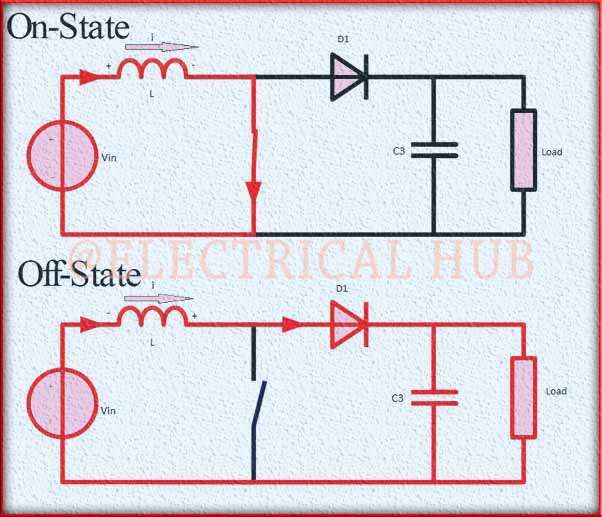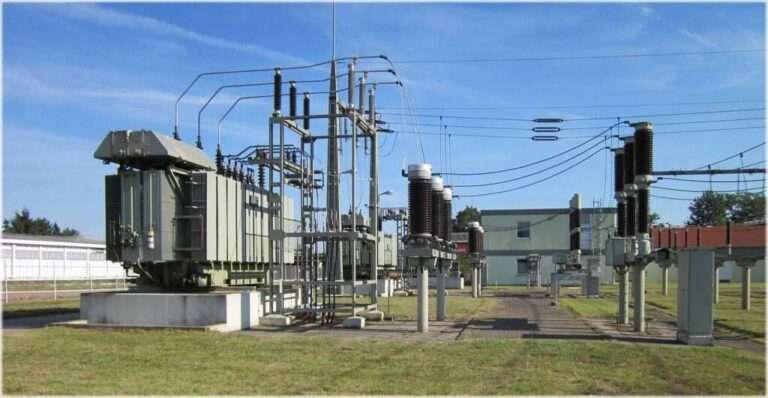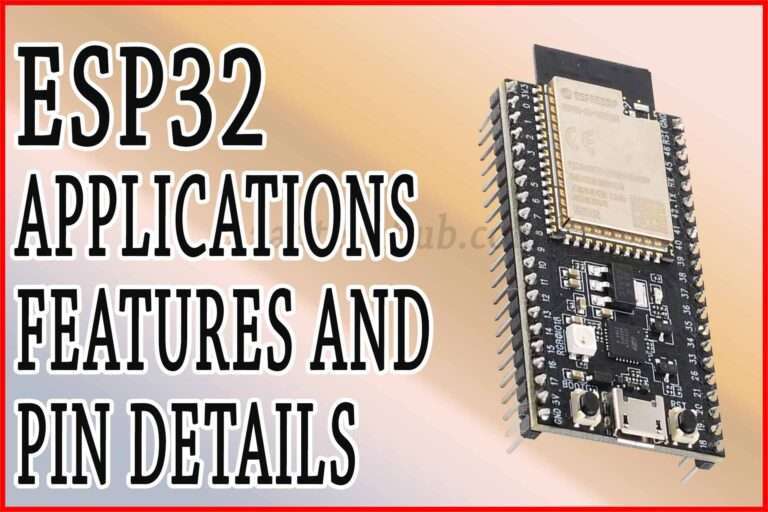Boost Converter Interview Questions: Best Guide
We are glad you have joined us for our in-depth discussion on “Boost Converter Interview Questions.” Boost converters are essential for power conversion and voltage management in the field of electrical engineering. Boost converters are essential in a wide range of applications, from portable electronics to renewable energy systems, because they can efficiently step up voltage levels.
Boost Converter Interview Questions
In this talk, we’ll look at a variety of boost converter interview questions and get into the specifics of their construction, functionality, and real-world uses. These boost converter interview questions will highlight less-discussed details and offer insightful information on this crucial technology, whether you’re a prospective engineer getting ready for a job interview or an industry professional looking to expand your knowledge.

Table of Contents
What is a current-fed boost converter, and how does it differ from a voltage-fed boost converter?
A current-fed boost converter regulates the output voltage by controlling the input current. It differs from voltage-fed converters as it can handle a wider input voltage range and offers inherent short-circuit protection.
What is the basic principle of operation of a boost converter, and how does it step up the input voltage?
Boost converter interview questions often start with a basic inquiry into the working principle of a boost converter, which raises the input voltage to a desired level. A boost converter steps up the input voltage using a switch, inductor, diode, and capacitor. When the switch is ON, energy is stored in the inductor (L). When the switch is OFF, the diode conducts, releasing stored energy to the output.
An essential question in boost converter interview questions revolves around the duty cycle calculation, a pivotal factor in controlling the output voltage.
Vout = Vin / (1 – D)
where Vout is the output voltage, Vin is the input voltage, and D is the duty cycle.

Explain the duty cycle in a boost converter and its relationship with the output voltage.
The duty cycle (D) determines the fraction of time the switch is ON. Increasing D increases the output voltage. D is typically controlled to regulate the output voltage. Boost converter interview questions frequently delve into design considerations, touching upon topics like component selection, voltage regulation strategies, and efficiency optimization.
What are the key components of a boost converter, and how do they contribute to its functionality?
A boost converter includes an inductor (L), a diode (D), a capacitor (C), and a switch (usually a transistor). The inductor stores energy, the diode directs the energy, and the capacitor filters the output.
Can you describe the differences between continuous conduction mode (CCM) and discontinuous conduction mode (DCM) in boost converters?
Continuous conduction mode (CCM) occurs when the inductor current never falls to zero during a switching cycle. In discontinuous conduction mode (DCM), it does. DCM is used at light loads to reduce switching losses.
What are the advantages and disadvantages of using a Schottky diode versus a standard diode in a boost converter?
Schottky diodes have faster recovery times and lower voltage drops, reducing conduction losses compared to standard diodes. They are preferred for boost converters.
Explain the importance of feedback control in maintaining the output voltage stability of a boost converter.
Feedback control, often with a PID controller, adjusts the duty cycle to maintain the desired output voltage, ensuring stability and regulation.
Discuss the significance of the switching frequency in boost converter design and its impact on efficiency and component sizing.
Switching frequency (Fs) affects converter size and efficiency. Higher Fs reduce the size of passive components but can increase switching losses.
Explain the concept of energy recovery snubbers in boost converters and their advantages.
Energy recovery snubbers reduce switching losses by recovering and reusing energy stored in parasitic components. This boosts efficiency and reduces stress on components.
How can you protect a boost converter from overvoltage conditions, and what is the role of a clamping circuit or snubber?
Clamping circuits or snubbers protect against overvoltage conditions, preventing damage to components.
Explain the concept of load transient response in boost converters and the techniques used to minimize output voltage variations during load changes.
Load transient response refers to how the output voltage reacts to sudden load changes. It can be improved by optimizing control loop parameters and using feedforward techniques to anticipate load variations.
Describe the operation and benefits of using synchronous rectification in boost converters versus using freewheeling diodes.
Synchronous rectification replaces the diode with a MOSFET to reduce conduction losses. It improves efficiency but requires precise control of the synchronous switch. Advanced boost converter interview questions may inquire about synchronous rectification and its role in reducing conduction losses, showcasing candidates’ expertise in power electronics.
How do you address the reverse recovery problem in diodes used in boost converters?
The reverse recovery issue is minimized by selecting Schottky diodes with fast recovery times or using synchronous rectification with MOSFETs.
Discuss the impact of parasitic inductance in the input and output paths of a boost converter and how to mitigate it.
Parasitic inductance can lead to voltage spikes and ringing. Mitigation involves minimizing trace lengths, using snubber circuits, and careful layout design.
What are the challenges in achieving high-efficiency operation in boost converters at both light and heavy loads?
Achieving high efficiency requires optimizing control loop parameters and choosing components for minimal losses at various load and input voltage conditions.
Can you explain the concept of discontinuous conduction mode (DCM) and its applicability in boost converters?
DCM occurs when the inductor current falls to zero during the OFF time. It’s relevant at light loads, reducing conduction losses and providing improved efficiency.
Describe the operation and advantages of multiphase boost converters, especially in high-power applications.
Multiphase boost converters use multiple interleaved phases to reduce current ripple and distribute power evenly, improving efficiency and reducing component stress in high-power applications.
How do you design an input filter for a boost converter to reduce conducted EMI, and what considerations are essential in this design?
An input filter minimizes EMI by selecting components (inductor and capacitor) based on switching frequency and conducting EMI limits while considering differential and common-mode filtering.
What is the role of a freewheeling diode in a boost converter, and how does it impact efficiency?
The freewheeling diode provides a path for inductor current to flow when the switch is OFF, preventing reverse voltage spikes and enhancing efficiency.
Discuss the influence of load and input voltage variations on the duty cycle and output voltage in a non-ideal boost converter.
Load and input voltage variations affect the duty cycle (D) and output voltage (Vo) according to the relationship
Vo = Vin / (1 – D).
Non-idealities like voltage drops must be considered in the calculation.
Explain the concept of critical inductance in a boost converter and its significance in ensuring continuous conduction.
Critical inductance is the minimum inductance required for continuous conduction. Below critical inductance, the converter enters DCM. It’s essential for stable operation.
What is the impact of the input voltage ripple on the output voltage stability in a boost converter?
Input voltage ripple directly affects output voltage stability. Smaller input voltage ripple results in better output voltage regulation. Output voltage (Vo) can be approximated as
Vo ≈ (D * Vin) / (1 – D).
How can you improve transient response in a boost converter with load steps or input voltage variations?
Transient response can be enhanced by using appropriate control loop compensation and feedforward techniques to quickly adapt to changes without significant overshoot.
Describe the principles of soft-start circuitry in boost converters and its importance in preventing inrush currents.
Soft-start gradually increases the duty cycle during startup to prevent inrush currents, reduce stress on components, and ensure safe operation.
What are the considerations when selecting components like inductors and capacitors for a high-voltage boost converter?
Component selection must account for voltage ratings, ESR, and saturation current to ensure they can handle the high voltages and currents in a high-voltage boost converter.
Explain the operation and benefits of coupled inductors in boost converters for achieving higher voltage conversion ratios.
Coupled inductors share magnetic flux, allowing higher voltage conversion ratios. Their operation depends on the turns ratio, and the output voltage can be calculated as
Vo = (N2 / N1) * Vin.
What are the challenges and solutions when designing a boost converter for applications with wide input voltage ranges, such as solar inverters?
Wide input voltage range applications require careful component selection and control schemes to maintain efficiency and stable operation across varying conditions.
Discuss the advantages and trade-offs of using GaN (Gallium Nitride) or SiC (Silicon Carbide) devices in boost converters.
GaN and SiC devices offer lower switching losses and higher switching frequencies, improving efficiency. However, they may have higher component costs and require specialized drivers.
Can you explain the concept of voltage clamping in boost converters and how it protects components from overvoltage conditions?
Voltage clamping limits the output voltage to prevent overvoltage damage. It can be achieved using zener diodes, clamp circuits, or crowbar circuits.
Describe the role of input power factor correction (PFC) in boost converters and its impact on meeting power quality standards.
PFC improves power factor and reduces harmonics, ensuring compliance with power quality standards and minimizing power losses in the input stage.
What techniques can be employed to minimize reverse recovery losses in diodes used in boost converters?
Techniques include selecting fast-recovery diodes or Schottky diodes with low reverse recovery charge (Qrr) to reduce reverse recovery losses.
Explain the operation of a charge pump in boost converters and when it is advantageous to use one.
A charge pump uses switched capacitors to boost voltage. It’s advantageous when voltage doubling or inversion is required without using an additional transformer.
How does the choice of control mode (e.g., voltage mode, current mode) affect the performance and design of boost converters?
The choice of control mode impacts transient response and stability. Voltage mode control simplifies design, while current mode control provides inherent current limiting. Candidates should be prepared to discuss different control modes in boost converter interview questions, including voltage mode control and current mode control, and articulate their advantages.
Discuss the significance of non-linear control techniques like sliding mode control in improving the dynamic response of boost converters.
Sliding mode control provides a robust and fast transient response by driving the system along a sliding surface. It’s particularly useful in applications with varying parameters.
What challenges are associated with designing a boost converter for applications operating in high-temperature environments, and how can they be addressed?
High-temperature operation requires component derating, thermal management, and selecting components designed for elevated temperatures.
Can you explain the concept of fractional turns in coupled inductors used in boost converters and how it impacts voltage conversion ratios?
Fractional turns enable precise control of the output voltage by adjusting the turns ratio (N2 / N1) of the coupled inductors.
What is the role of the peak current mode control in boost converters, and how does it affect current sensing and regulation?
Peak current mode control regulates the inductor current, improving transient response and simplifying control. Current sensing is typically done using a current sense resistor (Rcs), and current regulation helps maintain output stability.
Explain the concept of dead time in boost converters and its importance in preventing shoot-through conditions in the switches.
Dead time ensures that both the high-side and low-side switches are not turned on simultaneously, preventing shoot-through and protecting the switches. It is essential for safe operation.
Discuss the advantages and limitations of using digital controllers in boost converters for advanced control and monitoring.
Digital controllers offer flexibility and precise control but may introduce additional complexity and require analog-to-digital converters (ADCs) for signal processing.
Can you elaborate on the concept of multiphase interleaved boost converters and their benefits in terms of reduced current ripple and improved efficiency?
Multiphase interleaved boost converters split the load current among multiple phases, reducing current ripple and distributing power more evenly among components. This improves efficiency and reduces stress on components.
In conclusion, the world of electrical engineering and power electronics is dynamic and ever-evolving, with boost converters playing a crucial role in powering the modern world. Our exploration of “Boost Converter Interview Questions” has uncovered a wealth of knowledge, from current-fed versus voltage-fed converters to advanced control strategies and component selection.
These questions explain boost converter design and operation, offering both interviewers and candidates a deeper understanding of this essential technology. As the demand for efficient power conversion continues to grow, mastering the intricacies of boost converters remains a valuable skill. We hope this discussion has been insightful and aids in your pursuit of expertise in boost converter interview questions.
Follow us on LinkedIn”Electrical Insights” to get the latest updates in Electrical Engineering. You can also Follow us on LinkedIn and Facebook to see our latest posts on Electrical Engineering Topics.
Worth Read Posts




